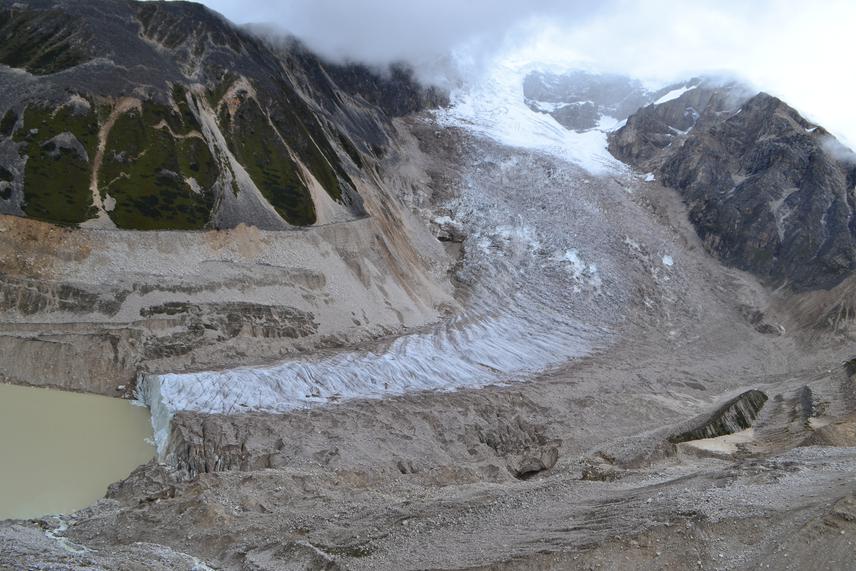Sonam Wangchuk
The aims are:
Hazard assessment of Luggye glacial lakes through remote sensing and field observations for habitat conservation along Punatshang Chhu basin
Dissemination of obtained results to the inhabitants along Punatshang Chhu basin, governmental and non-governmental organizations for awareness.

Luggye glacier in contact with Luggye glacial lake.
This study deals with the hazard assessment of Luggye glacial lake which is one of most rapidly expanding moraine dammed glacial lakes in Bhutan Himalaya. Luggye glacial lake is listed as one of the potentially dangerous glacial lakes (PDGLs) of 25 PDGLS. It could claim threat to the habitats of endangered Golden Mahseer (Tor putitora) and critically endangered species White-bellied heron (Ardea insignis) found downstream Punatshang Chhu basin, Bhutan as a result of sudden outburst. It has a past record of catastrophic outburst in 1994 which took 21 lives of people, severely damaged agricultural lands, infrastructures, and aquatic flora and fauna. Thus constant monitoring through satellite remote sensing and field observation is very important to update upon the current conditions of Luggye glacial lake.
This study will present conditions of physical variables including the expansion trends, fronts of rapid expansions, sizes and expansion rates since 1990-2016 using satellite data. The current size of Luggye glacial lake will be invented using GPS measurement. The triggering factors that could lead to sudden outburst and dam vulnerabilities will be explored surrounding Luggye glacial Lake during summer and winter through field observations. The second part of the project will focus on the dissemination of results for the purpose of awareness and education to the inhabitants along the Punatshang Chhu basin, relevant governmental and non-governmental organizations through seminars and self-organized presentations.